Note to readers: This post was written in December of 2011. PLEASE do not ask me why I eat ‘this’ or why I don’t eat ‘that’ — as what is shown here does not necessarily reflect what or how I eat today (or more importantly, how you should eat). My diet evolves constantly, due to my constant tweaking and self-experimentation. Over time, I’ll share it here and there, but what I eat is not at all the focus of this blog. I ask that you refrains for pursuing questions about what I eat in the comment section.
Once people start to “get it” with respect to why carbohydrate reduction, or all-out restriction, leads to good things, the inevitable question I’m asked is, “So….what exactly do you eat?” I’m always a bit hesitant to get into this. It’s sort of like asking a pilot, “So…how do you fly this plane?” It’s a great question, but probably the wrong first question.
For many people it’s so overwhelming to contrast what they currently eat – probably a typical American diet of 500-600 daily grams of carbohydrates (200 grams of which are sugar) – with a diet of less than 50 daily grams of carbohydrate, which is what I consume. Remember, what I’m showing you here is what I have been eating for about the last 7 months. For the first 20 months of my nutritional transformation, I was gradually reducing carbohydrate intake from about 600 daily grams to 300 daily grams to 150 daily grams.
It’s really important to understand that carbohydrate reduction is a continuum. There is no “right” amount of carbohydrate to eat. Let me illustrate this with the following “2 by 2” matrix, below (sorry, once a consultant, always a consultant). When asking the question, “How much should I reduce my intake of carbohydrates?” it’s a good idea to start with two broader questions:
- What is my inherent level of insulin resistance?
- What are my goals?
There are technical ways to quantify the answer to the first question, which I will detail in future posts. However, the simple version of determining your inherent amount of insulin resistance is checking how many criteria of metabolic syndrome are present. In other words, are you overweight? Is your waist large? Is your blood pressure high? Do you have elevated blood glucose or triglycerides (these are determined from a standard blood test)? Do you have low HDL cholesterol? For the purpose of this question, even responding “yes” to one of these questions means you are predisposed to being insulin resistant. I was a “yes” to 3 of these questions.
Consider this matrix, and let’s use me as an example.
- How predisposed am I to insulin resistance? One look at a picture of me in my non-lean state, coupled with an understanding of my family history, and it’s clear I didn’t hit the genetic lottery with respect to insulin resistance. Hence, I am towards the right of graph.
- What am I optimizing for? Some folks want to lose 15 pounds. Others want to have fewer swings in daily energy level, or stop taking their blood pressure medicine. In my case, I want to maximize as many variables as possible: I want to be as lean as I can; I want to cure my insulin resistance; I want to be sure I never have a single symptom of metabolic syndrome; I want to do everything I can to avoid cancer and Alzheimer’s disease; I want to be metabolically flexible. Hence, I am towards the top of the graph.
As you can see, based on my poor genes and lofty goals, I find myself in the upper right square, which means I need to adopt the greatest amount of carbohydrate restriction. My wife, in contrast, has good genes, coupled with high goals, placing her in the upper left box. As a result of this combination, she does not need to restrict carbs as much as I do. If her goals were even more modest, she could get away with very little reduction in carbohydrates – probably just reducing sugar without much reduction in starch.
Below is a picture of a few of the foods you’ll typically find in my refrigerator. Note that on average I consume about 4,000 to 4,500 calories per day. I get this from approximately 400-425 grams of fat, 120-140 grams of protein, and 30-50 grams of carbs. In addition, there are a number of supplements I consume daily, which I describe in the table below. In future blog posts I will go into greater detail as to why I consume each of these supplements, but for now I’ll give a very quick explanation.
Finally, note that under no circumstance do I ever count calories (for the sake of limiting them). When I was first transitioning into ketosis I did need to count how much carbohydrate and protein I was consuming – anything over about 50 grams of carbs and 150 grams of protein makes it difficult to generate sufficient ketones – but I do not ever count calories for the sake of restricting them. I eat when I’m hungry. I don’t eat when I’m not hungry.
Regular supplements I consume every day
*I will be writing a great deal about the role of omega-6 and omega-3 fatty acids in our diet in subsequent posts. However, if you want a quick (albeit high-level and not overly nuanced) overview of the topic, take a look at what Dr. Andrew Weil and Livestrong have to say about it.
One last point on supplements – I do not take a multivitamin at this time, but I am looking into it a bit more closely. My concern is that 1) they may not be necessary when you remove glucose from your diet (I’ll write about why in the future), and 2) they may actually do direct harm, as a result of contaminants.
Ok, at long last, here is a list of what I ate over the past 5 days (excluding water, still and sparkling, which I consume about a gallon of each day)
Wednesday
Breakfast: “Fat shake” (In a blender: 8 oz heavy whipping cream, 8 oz sugar-free almond milk; 25 gm sugar-free hydrolyzed whey protein, 2-3 frozen strawberries)
Lunch: About 4 or 5 oz of assorted cheese (Gouda, Swiss, Manchego), 2 or 3 oz olives, about 4 oz of particularly fat salami and pepperoni
Late afternoon: About 2 oz of mixed nuts (almonds, walnuts, peanuts), large latte (latte made with heavy fat cream instead of milk) at Peet’s
Dinner: Garden salad with olive oil (lots of extra oil) and balsamic vinegar dressing, about 6 oz grilled salmon with a lot of butter and lemon juice
Thursday
Breakfast: Scrambled eggs (6 yolks, 3 whites**, with added heavy fat cream) cooked in coconut oil, 3 or 4 sausage patties (be sure to look for brands not cured in sugar).
Coffee with homemade whip cream (heavy fat cream hand whipped)
Lunch: Half chicken (thigh, breast, wings) with lots of skin; about 2 oz of Gouda and aged-cheddar
Dinner: Wedge blue cheese salad with bacon; 12 oz prime rib with lots of butter; 5 or 6 pieces of asparagus coated in butter
Coffee with half and half cream, 2 cups (the restaurant did not have heavy cream, so I had to settle for half-and-half)
**The reason I typically minimize egg whites, at least when making my own eggs, is to ensure I keep protein intake under about 125 grams per day. Ketosis is pretty easy to attain if one is eating, say, 2500 calories per day. However, given my caloric demands – and the requirement that I keep protein intake limited – I really need to go out of my way to ensure I’m not eating too much protein. I will be writing about this in much greater detail in a future post.
Friday
Breakfast: Whole fat latte at Starbucks (made same as above), scrambled eggs (about 4 eggs), bacon (high fat pieces), slice of Swiss and slice of cheddar (since I was eating in the airport, the scrambled eggs were made “normally,” not with the additional fat I use when making my own)
Lunch: About 4 oz of especially fat salami and pepperoni, about 2 oz Parmesan cheese
Dinner: Ground beef sautéed with heavy cream, onions, broccoli, and melted cheese
2 large cups of decaf coffee with homemade whip cream (heavy cream whipped with a touch of xylitol)
Saturday
Breakfast: Scrambled eggs (6 yolks, 3 whites, with added heavy fat cream) cooked in coconut oil, 3 or 4 pieces of especially fat bacon (not cured in sugar), about 3 oz of cream cheese
2 cups of coffee with heavy cream
Lunch: Tomatoes with basil and mozzarella and balsamic vinegar and olive oil, about 2 oz raspberries with homemade whip cream
Dinner: Leftover ground beef sautéed from previous night, salad with homemade cream dressing (whole fat Greek yogurt, olive oil, basil, blue cheese, garlic)
1 cup of decaf coffee with homemade whip cream
Sunday
Breakfast: Omelet (6 yolks, 3 whites, coconut milk, sautéed onions) cooked in coconut oil, 4 or 5 pieces of the fattest bacon I can find
2 cups of coffee with heavy cream
Lunch: Plate of assorted cheeses (aged Gouda, Swiss loaf, aged Parmesan – about 3 oz), about 2 oz salami, about 1 oz olives
Dinner: Cream of mushroom bacon soup (heavy cream, chicken broth, shredded Parmesan cheese, mushrooms, chopped bacon, garlic, butter, chopped papers, various spices), leg of lamb (baked in sauce made of red wine, balsamic vinegar, diced tomatoes, garlic, and a lot of spices)
2 cups decaf coffee with homemade whip cream (as above)
So there you have it — 5 days in the eating life of Peter Attia. This may look a bit strange, relative to what you may be eating now, but remember, I’m at the far end of the spectrum – i.e., nutritional ketosis. You may just be starting your own journey of reducing carbohydrates, but I hope this gives you an idea of what I eat. In particular, what probably stands out is:
- I go to great lengths to avoid sugar which, unfortunately, shows up in virtually every highly processed food.
- I eat zero starch (e.g., bread, cereal, rice, crackers, pasta).
- I consume only modest amounts of fruit (one serving per day, at most, and only in the form of berries, which contain the least amount of fructose).
- I eat vegetables, but primarily because they are a great way to get more fat (e.g., high-fat salad dressings, butter), not because I “need” them.
- I go out of my way to eat as much fat as possible, especially monounsaturated and saturated fat (the only fat I avoid is omega-6 polyunsaturated fat).
- I have a few “go to” meals that I eat several times per week. I do this because I really like them and it’s quick and easy make them. Yours need not be the same!
Photo by Glen Carrie on Unsplash

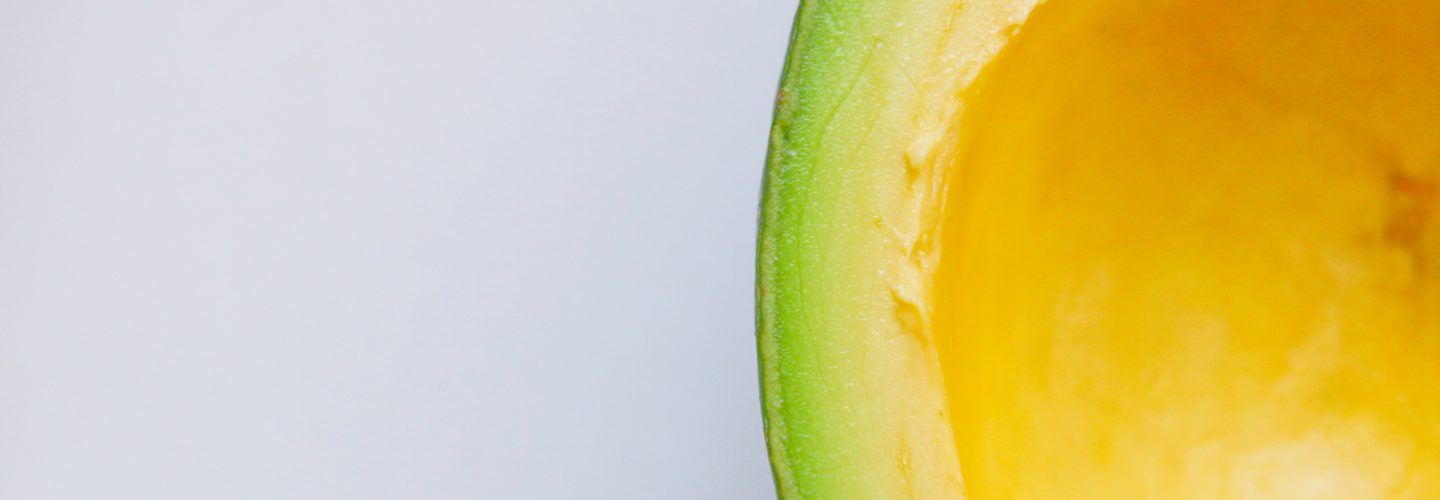
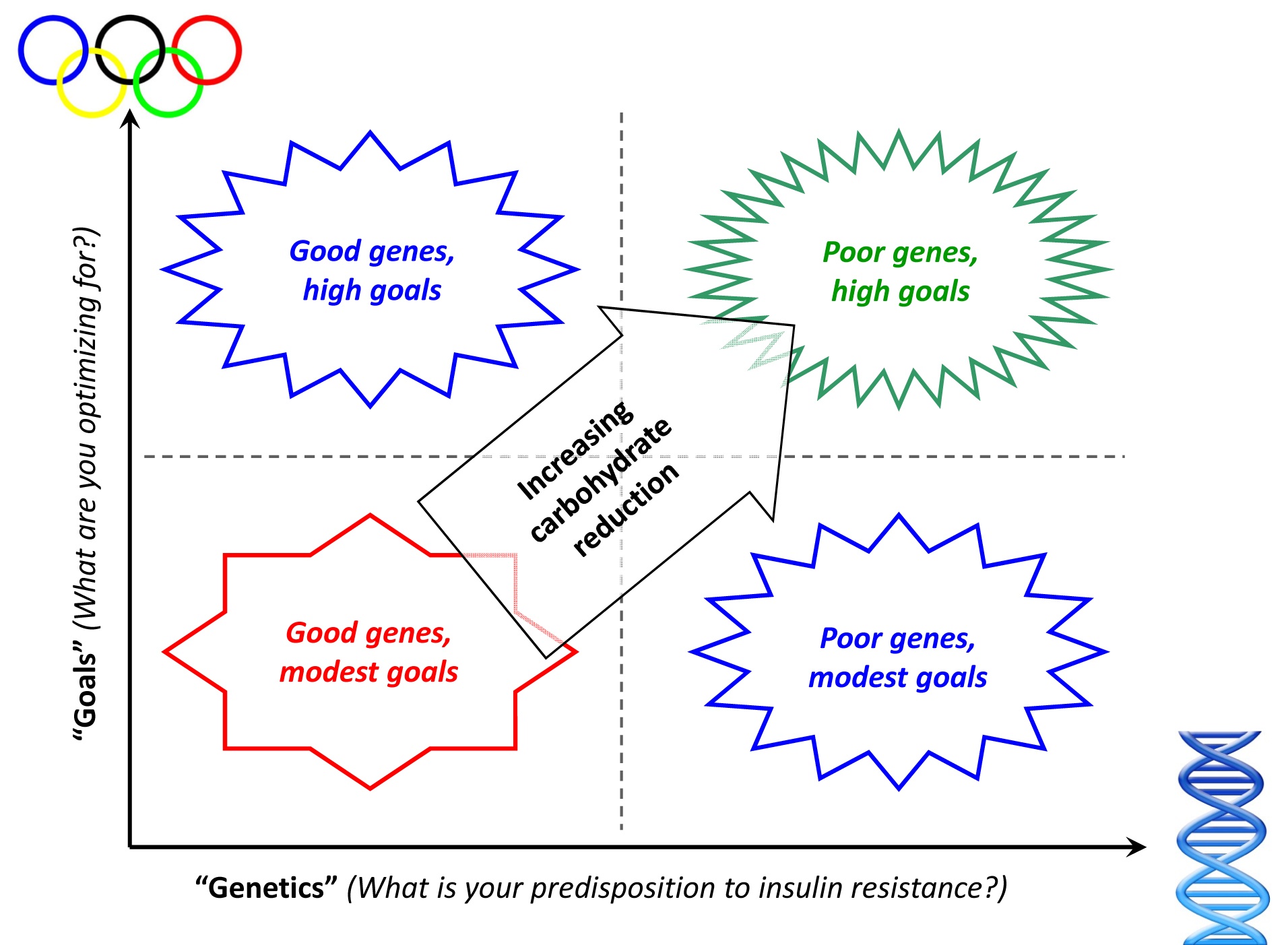

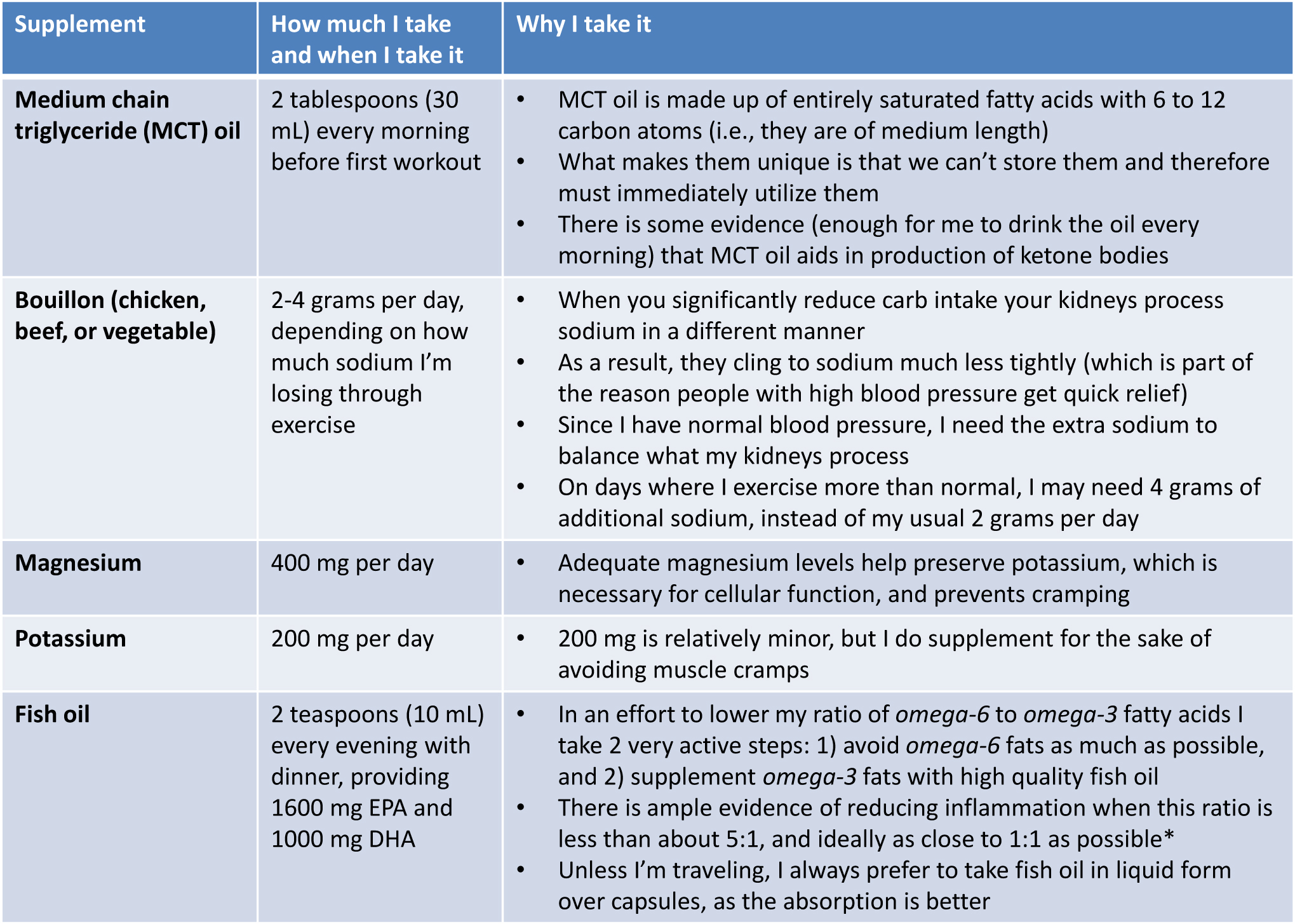

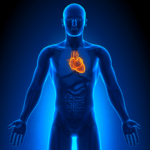
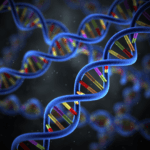
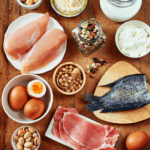
Hello Peter,
I spent from February 2013 to December 31, 2014 battling anorexia as a means to lose weight for a competition. I ate roughly 300-400 calories a day, mostly plain Greek yogurt, whey protein shakes and bananas and went to the gym for 1.5 – 2 hours a day. I went from a very healthy 142 pounds and 5`7 to 117 pounds. On January 1, 2015 I decided that enough was enough and started cutting back on my gym time, going to 45 minutes to an hour, and started eating a healthy diet. My diet mostly consisted of low carb vegetables, lean meats, nut butter– no dariy, no starchy carbs– pretty close to a female body builders diet. But, from January 2015 to May 2015 my weight rebounded back to 172 pounds and a size 12. Now here I am a year and a half later still stuck at 172 pounds and nothing that I have tried has worked. I have been to multiple Dietitians, my family doctor, a metabolic doctor, endocrinologist, hormonal doctor—you name it– and everyone says that nothing is wrong with me—that I probably just ‘slowed down my metabolism that much that my body is still holding onto everything it can get.’ However, a year and a half later–I have a hard time believing that. Even though they are medical professionals I can’t help but question that something else can help me.
While I know you cannot provide medical advice and I respect that–Do you believe that a ketogenic diet could help to get me over this hump and perhaps get me back on track. I don’t want to be as small as I was, but I would be ecstatic to be 145-150 pounds and a size 8 again. Any words of wisdom you may have would be greatly appreciated.
Take Care.
Erin
My issue is stopping the cravings for simple carbs. I have read that if people stop eating simple carbs for two weeks, the cravings begin to disappear, but I can’t stop eating them for two hours, much less two weeks. I steel myself–‘Okay, today I am not going to eat simple carbs’, but two hours later I find myself eating them. I think about them all of the time, so how do I stop that?
Cathy,
You could try exogenous ketones, for the first couple of weeks to help you through the most difficult part getting into ketosis. Hopefully, it will stop your cravings. Exogenous ketones are not cheap, but they may help you.
Cathy, trying will power alone is really hard (never works for me either). If possible, remove all the high carb temptations from your environment (easier at home than at work, but even at home this may involve a lot of negotiation). Make sure you have alternate snacks available (like nuts, cheese). Eat a filling breakfast (eggs, bacon, etc.) and you may not feel like snacking. Add a little coconut oil or MCT oil to your diet. Coconut oil contains lots medium chain triglycerides (MCT) which are readily turned into ketones, and are a lot cheaper than exogenous ketones. But do not overdo MCT oils, as they can upset your stomach, and they do contain a lot of calories.
Alternately, try intermittent fasting instead, that is plan to eat nothing for a set time. I find a 16 hour fast with just 2 meals a day works best for me. It helps if you are busy during the last few hours of a fast. If you have time, try to get some exercise then.
A big hello from Bosnia 🙂
I only hope Peter you would have the time and energy to change my life with 10 seconds of your time and max 150 typed characters 🙂
my question… i am 34, two kids, entrepreneur, eating discipline ZERO (whole balcans lives on meat and cheese pies and sugary drinks+meat), on the road almost all the time, have hit rock bottom, am “healthy” = don’t have any big diseases I know of… want to change my life at least 50% as you did
please give guidelines what to do in the next 3 years of my life, GENERAL guidelines, remove sugar –> remove carbs –> something like that… just what to do 🙂
if I wont be so lucky to get your answer GOD bless you man…if not, God bless you anyway, you helped a TON of people with your insights 🙂
Sugar: Zero advantage; carbs: depends on quality
Mr. Peter thanks for your work I have been doing the ketogenic diet for two weeks five days after I started this diet I experience the keto flu I felt that I have been over that but now I’ve been on this diet for two weeks and it seems like after every meal I experience and upset stomach is like a combination of pain and discomfort . Can you please advise me how can I help this issue thank you so much
Dear Peter
I find your website very interesting but I’m not a typical member of modern society (with weight gain problems).
I’ve followed a LC diet since 2004. I discussed it at length with obese friends and we agreed that it is probably beneficial to most individuals, not just ‘fat’ ones. It certainly reduces my dental problems. I have interpreted ‘LC’ as 100 g/day. It doesn’t affect my weight and 100 g/day is easy and palatable.
However, I was recently laying paths in the garden, including lifting concrete paving slabs weighing the same as I do. I spotted that I couldn’t lift them as easily as 7 years earlier. I bought some scales and weighed myself. I hadn’t bothered; after all I’d stayed much the same weight for 30 years 1975-2005 (ages 22-52).
I’d lost 3 kg from the 65 kg I weighed in ~2007. Doubtless some muscle had gone, making the crucial difference to what I could lift. I was quite concerned. By following general advice for ectomorphs on bodybuilding websites, although *not* eating 60% Cs, I’ve recovered 1.5 kg in the last 2 months, and the muscles have visibly improved, but it’s hard going. I have to eat when I’m not really hungry. Eating more causes feelings of indigestion, even flatulence. More advice on your website for ‘ectomorphs’ (as opposed to endomorphs and mesomorphs) would be much appreciated.
Regards
David.
Hey Peter, I’m quite new to the understandings on diet (outside the normal dogma). Looking at the diet that’s presented on here it goes against other doctors and scientist I’ve studied. One in particular is Dr. Colin T. Cambell. In his research he states the effects dairy and meats has on us, in terms of developing cancer and heart disease. Have you read any of his literature and have any opinion on it. His approach to nutrition is a whole food plant based diet. A lot of the foods you have in here do go against that. Just wondering your take. Thanks
I am really curious about avoiding omega 6 polyunsaturated fatty acids. Mammals, as i understand it, don’t make fatty acids with unsaturations past C9. Linoleic acid, which has an unsaturation at C12 and is very important in our ability to produce arachidonic acid and eicosanoids, is an omega-6 thats considered “essential.” Avoiding this fat would thus inhibit some of the processes that occur during inflammatory responses, etc. I don’t presume you haven’t thought of this, but I am kind of methodically going through all of the posts from your earliest to the last, reading the posts and all the comments and responses (which takes a lot of time but I spare the time out of pure interest in this field and in hopes it will make me a more well informed physician in the future), and the reasoning behind this hasn’t come up yet from just what I have read. If the answer for why to still avoid them, given the above mentioned example of why we need them, please just tell me to keep reading. If its not something addressed elsewhere, its a question that’s really gnawing at me that i’d love to have answered.
Peter:
What is the best source of fiber for someone with IBS who is trying to reverse metabolic syndrome?
Thanks,
Rosa
Thanks for sharing your experience. I’m a 5’10” 152 lbs CAT2 road cyclist and about to try a keto diet. You mentioned there are some nuances to adjusting in a week and to minimizing mental/physical fatigue that happen with blood ketones < 0.6 mM. To accomplish those, would you suggest any adjustments to the following plan?
– Eat carbs:protein:fat in about a ratio of 1:3:9 (for me: ~30 g/day carbs, ~150 g/day protein)
– Eaten fats should be roughly 35-40% SFA, 45-50% MUFA, remainder PUFA
– Minimize or avoid Omega 6's
– Track blood glucose and ketones with Abbott monitor at same situation(s) every day (goal is 1-2 mM blood ketones)
– Track macronutrients with app MyFitnessPal
– Supplement salt (3-5g/day)
– Supplement magnesium (400mg/day in pill form)
– Supplement with 2 TBSP MCT oil in the morning
– Supplement with fish oil at dinner to maximize absorption via liver bile
– Watch to see if dairy affects my blood glucose
– ICANN starch and/or salty nuts for fuel on rides longer than 2-3 hours
Thanks!
What is your take on the Cochrane Review on Saturated Fat? “The findings of this updated review are suggestive of a small but potentially important reduction in cardiovascular risk on reduction of saturated fat intake.”
See my lecture on dietary guidelines.
I just started following you to the promised land. And just before I’m ready to deem you a prophet I see Salami?? Pepperoni?? Sausage?? Bacon?? DUDE!!!! (PUBMED “Processed Meat Cancer”) Are you at odds with all 40,000 papers? Sorry if people already hit you with this, but I’m too lazy to go through this eternal blog.
Thanks for reading this,
Mark
I can’t help you, there, Mark, b/c I’m too lazy to repeat myself.
Hey Mark,
Did you ever find out what the deal is? I search on the blog; could not find a straight answer
Thank you so much for sharing this. Looking at the “normal” western diet and hearing, “I eat most of my calories from fat”, one can be a little confused about what that means; I was picturing chugging a bottle of olive oil, or eating spoons full of butter. It’s not easy to put together a meal plan not knowing much outside of carb-filled unhealthy. Reading what you typically eat at any given time is a step to showing us what foods we should start looking at. Thanks. 🙂 I’m looking forward to reading more of your posts.
I’m planning to loose more weight. This post can help me a lot achieved my goals about my body. Thanks for the idea.